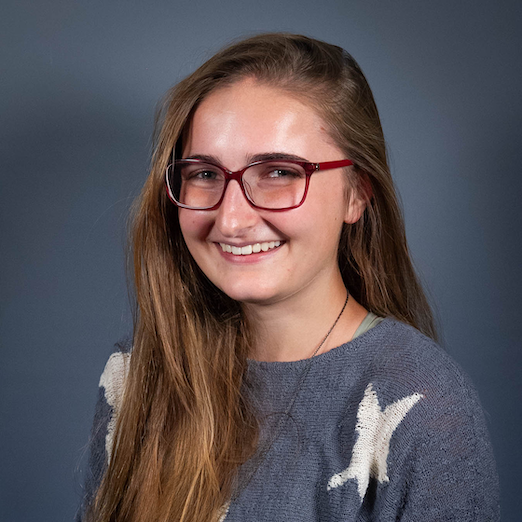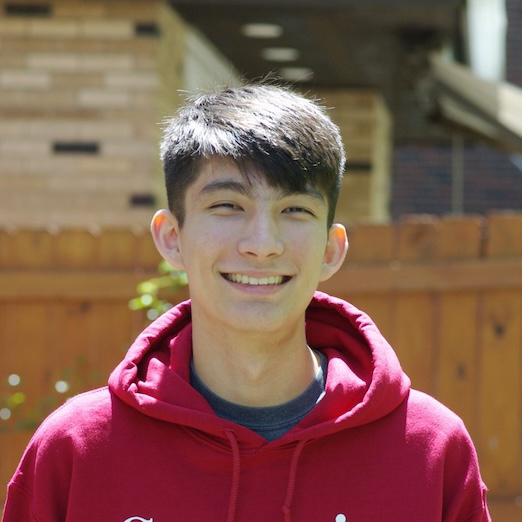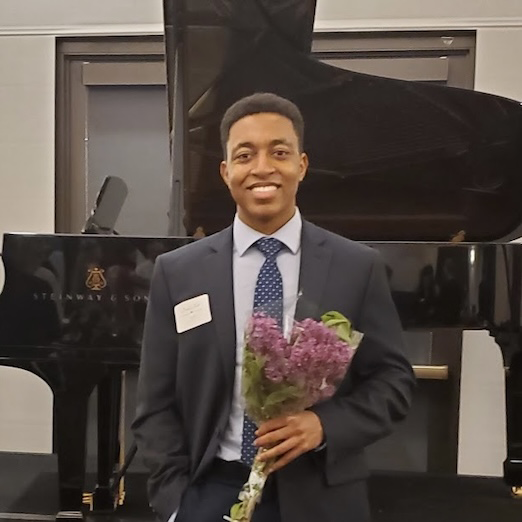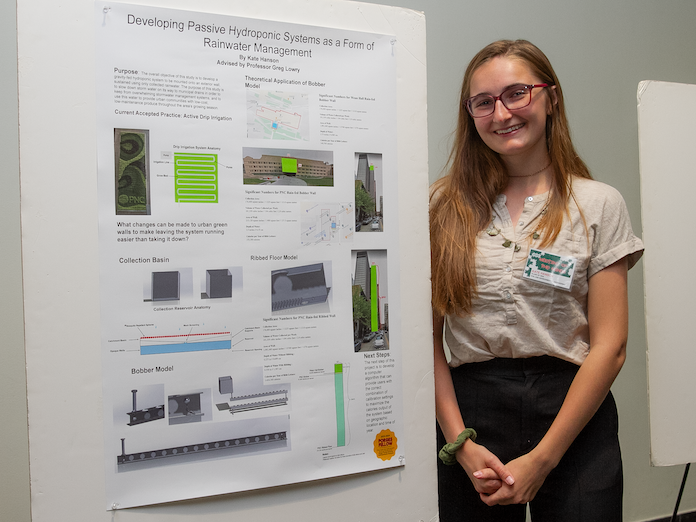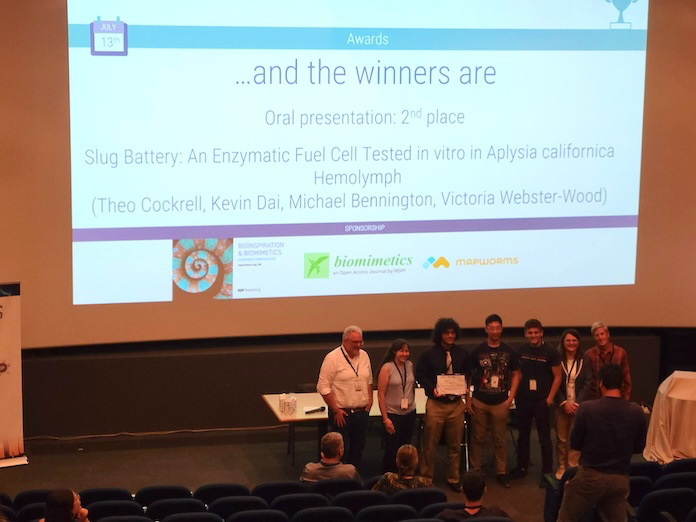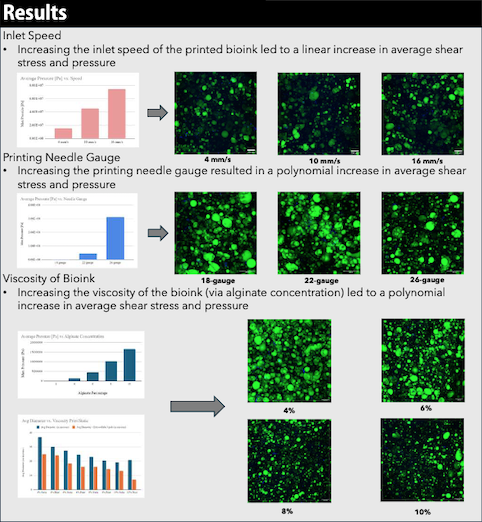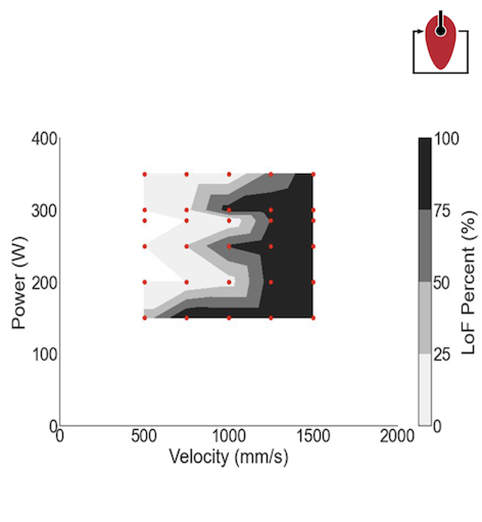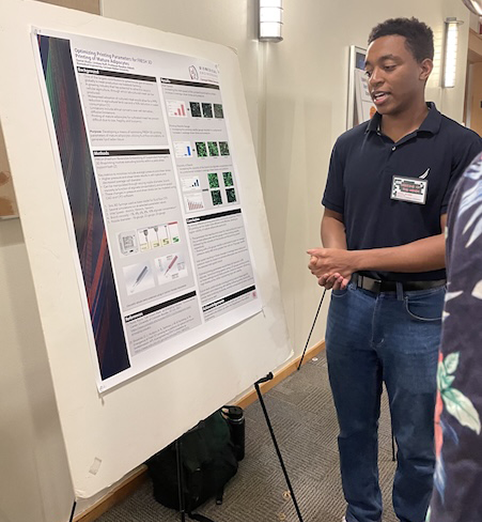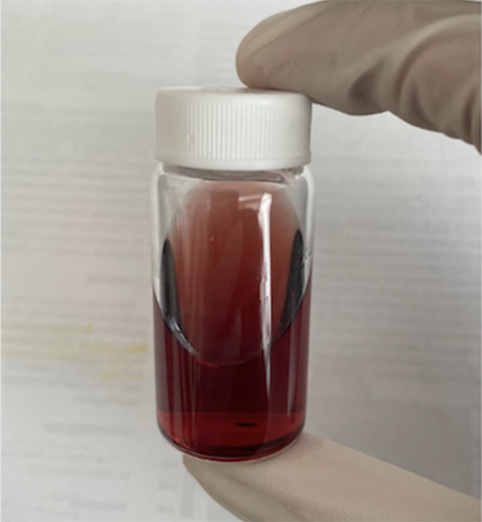Undergraduates present research at Meeting of the Minds 2024
Engineering undergraduate students had a wonderful showing at Meeting of the Minds, displaying posters, giving presentations, and demonstrating projects they have worked on this past academic year.
For one day at the end of each spring semester, the Cohon University Center becomes a hub of academic posters, presentations, and demonstrations of projects that undergraduate students have been working on throughout the year. Here are some highlights of what Engineering undergraduates are researching at Carnegie Mellon University.
Gravity-fed hydroponic rainwater management
Kate Hanson is a junior in civil and environmental engineering. Her project was inspired by a sight that Pittsburgh natives may remember from downtown a few years ago—a large green wall on a building owned by PNC Bank, brightening the intersection of Sixth Ave. and Grant St. The green wall has since been taken down due to the cost of upkeep, but this got Hanson wondering: was there a way to create a green wall that wasn't cost prohibitive?
After the upfront cost of installation, green walls require two main resources to maintain themselves: a supply of water to nourish the plant life and energy to work the water pumps. Pittsburgh is a city with heavy rainfall, so water comes from the sky for free. But making sure it is distributed along a wall in times of heavy or sparce rain without using an expensive pump was the calculation that Hanson tackled.
In her project, Hanson envisioned a long pipe system installed on the vertical face of any given wall, feeding the plant life. In times of heavy rain, flooding would be avoided by added a bobber below the rain collection tank. Working like a toilet flushing system, the floating bobber would be chained to a small door at the bottom of the tank. As the water level rises, the bobber rises, bringing the chain and door with it, allowing water to rush through the door until the water level lowers the bobber once more.
In dryer times, there may not be enough water to reach up to the roots of the plants from the bottom of the pipes. To make a small amount of water stretch further, the pipes are fitted with ribbed floors. These floors take up volume that water would otherwise fill, displacing the water level to raise it up to the plant roots.
Hanson received the Undergraduate Environmental Award for her poster. She is advised by Greg Lowry, professor of civil and environmental engineering, and will continue her research with the Swartz Center for Entrepreneurship to hopefully bring green walls to life in Pittsburgh. For a first installation, she has her sights set on Wean Hall, specifically the front face of the cube-like protrusion that houses a classroom above the fifth-floor entrance of the building.
Creating gold nanoparticles to sort chiral medicines
Alexander Henry (Harry) Burton is a sophomore studying chemical engineering and biomedical engineering. He worked on research in the all-undergraduate research lab overseen by Nisha Shukla, a special faculty member within the College. His research occurs at the nanoscale. In the lab, he can manipulate gold nanoparticles to give them a specific chirality, making them adept at sorting through chiral medicines.
Why gold? You may have asked the same question at the dentist's office. And the answer would be the same—gold is a largely non-reactive element, meaning that it does not interact with medicine or the human body in negative ways. Gold also has the added benefit of being easy to manipulate into different shapes at the nanoscale since it easily absorbs chiral amino acids, changing the gold into a desired chiral shape.
Chirality is a characteristic of nanoparticles that describes how they attach to other nanoparticles. You can think of it like the molecules having a clockwise or counterclockwise structure—a clockwise structure can never fit in with another clockwise structure, a counterclockwise structure can never fit in with another counterclockwise structure. Cells in our bodies have chirality. Therefore, to best administer medicine that needs to attach at the cellular level, clockwise medicine should be given to those with counterclockwise cells and vice versa. However, since the nanoparticles of medicine are basically identical, sorting out clockwise from counterclockwise particles is a difficult task.
That's where the gold comes in. By adding small amounts of chiral gold to the medicine, you can sort it into clockwise and counterclockwise parts. The counterclockwise medicine latches on to clockwise gold and vice versa, making it ready for administration into bodies.
When asked if the research was expensive, due to the nature of gold, Burton laughed and said, “It is expensive, but my lab’s principal investigator said it was okay.” The cost of the knowledge gained from the research outweighs the monetary price of gold.
Slug battery: an enzymatic fuel cell
Theophilos (Theo) Cockrell is a junior in electrical and computer engineering. He gave a presentation on a project he completed alongside post-doc Kevin Dai, Ph.D. candidate Michael J. Bennington, and Victoria Webster-Wood, an associate professor in mechanical engineering. They work in the Biohybrid and Organic Robotics Group, which seeks to find ways to bring electronic sensors to marine biomes for environmental sensing purposes.
Getting an electrical device to survive underwater is no easy task. Typical circuit boards cannot be exposed to water. Solar power is limited the further down you dive. And there is an abundance of marine life that researchers try their best not to disturb while placing sensors. So Cockrell’s group tried a novel approach—put a sensor inside a sea creature and power it off of the creature itself.
Cockrell developed an Enzymatic Fuel Cell (EFC), an implantable battery that charges based on organic input, such as glucose and oxygen in an animal’s circulatory system. For their model animal, they chose Aplysia californica—California sea hare—a kind of sea slug that has a convenient body cavity where a fuel cell can fit without harming the slug. This slug has suitable chemistry in the hemolymph transported by its open circulatory system.
Cockrell worked to test variables that could help perfect the so-called slug battery. Many factors can change the effectiveness of the battery, such as whether the electronics are rolled up or lying flat, the addition of certain chemical compounds on the battery, and the use of synthesized saline or hemolymph from the slug around the battery. The team was able to produce promising findings in vitro (in the lab) and hopes to move their tech in vivo (into a specimen) in the future.
Material characterization of metal additive manufacturing
Lauren Fitzwater is a junior studying materials science and engineering who is also minoring in additive manufacturing. She gave a presentation about the research she did as the only undergraduate student in the Engineering Materials for Transformative Technologies (EMIT) Lab which is overseen by Sneha Prabha Narra, an assistant professor of mechanical engineering. Alongside Ph.D. students Misha Khrenov and Justin Miner, Fitzwater explored the lack of fusion (LOF) boundary in laser powder bed fusion (L-PBF) of Inconel-718 (IN718).
There are a few acronyms to break down there: IN718 is a strong, non-corrosive nickel chromium alloy that is used in the production of jet engines and turbines. L-PBF is a manufacturing process that uses lasers to selectively melt metal powder to form it into the desired shape. LOF is a type of defect that can result from this form of additive manufacturing where pores form in the hardened metal where the melt pools have failed to overlap.
For typical L-PBF printing, parameters like laser speed and power will be carefully selected to avoid LOF and other defects like keyholing and metal balling up. Fitzwater noticed that the sweet spot was pretty rigid and difficult to achieve, and wondered if she couldn’t find a way to make the target a bit bigger. She noticed that traditional LOF research does not take into account melt pool geometry variability, instead basing calculations on average melt pool widths and depths.
The result for average melt pool geometry ends up being mostly a linear relation—a faster, more powerful laser will produce more defects. But Fitzwater tested a variety of melt pool sizes and found that the sweet spot started to wiggle around a bit more, resulting in a wavy pattern that showed that the laser could go faster and be more powerful at certain sizes. She hopes this research can be used in the future to improve the accuracy of process maps.
Fitzwater said after her presentation that finding this research opportunity with the EMIT lab opened her eyes to the world of additive manufacturing, a career path she had not previously considered.
FRESH-printing meat from lab-grown cells
Daniel Aluko is a sophomore studying mechanical engineering and biomedical engineering. He works in the lab of Rosalyn Abbott, assistant professor of biomedical engineering, to study effective methods for 3D printing lab-grown meat. The hope is to offer alternatives to traditional meat, which is tasking on the environment and presents ethical issues around the treatment of livestock.
Most people are familiar with 3D printers that extrude plastic—a rigid material that rapidly dries and takes form, holding itself aloft or supported on thin supports. However, when printing with something organic, the material cannot attach to itself quickly and take form without support since it is often squishy. This is why Aluko uses Freeform Reversible Embedding of Suspended Hydrogels (FRESH) 3D printing. With the FRESH method, lab-grown fat cells called adipocytes are added to a base of alginate, a neutral polymer formed from seaweed. This creates a viscous liquid referred to as bioink that is somewhere between castor oil and molasses in consistency. This bioink is then extruded into a support bath where it crosslinks or cures into the desired shape. The support bath is basically a clear jelly that melts away at body temperature, so it sloughs away from the final printed meat with ease.
Aluko was advised by biomedical engineering Ph.D. student Lindsey Huff. His role in the project was to test variables to ensure the best quality prints. Adipocytes are somewhat delicate and large, so ensuring that they remain intact throughout the print is crucial for a successful outcome. He studied the speed of extrusion, the gauge of the printing needle, and the viscosity of the bioink. By simulating extrusion in fluid flow software, Aluko was able to test multiple combinations of factors to find a happy medium between them all.
Aluko hopes to see the research also work for myocytes (muscle cells) which are smaller and more likely to hold up to anything that adipocytes can handle. As a sophomore, he hopes to explore other areas of research in his remaining years as an undergraduate at CMU. By getting an early start in research, he has time to compare FRESH 3D printing work to other areas of interest, such as biomechanics or biomedical devices. Exploring multiple areas will allow Aluko to better decide what he might like to study, should he choose to pursue a Ph.D. in the future.

